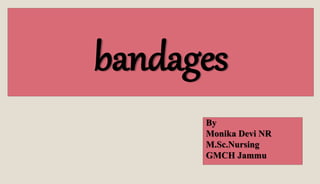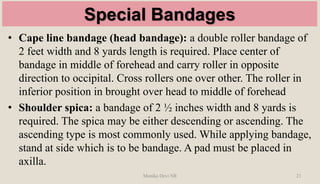The document discusses bandaging techniques for wounds and injuries. It defines what a bandage is and its purposes, which include controlling bleeding, immobilizing injured body parts, and protecting wounds. It describes different types of bandages like roller bandages, and techniques like circular, spiral and figure-of-eight bandaging. Key steps in bandaging properly include cleaning and supporting the injured area, applying even pressure, and securing the bandage. Special bandages are described for areas like eyes, ears, and shoulders. Proper bandaging is important for wound care and healing.





























